Following a record-breaking heatwave in the UK and western Europe, with climate change meaning that sweltering temperatures are likely to become more common, Smith Mordak outlines 10 ways to design buildings that remain cool in hot weather.
Want to design cool architecture? Of course you do! Follow these principles and you too can be a cool designer of cool spaces that don’t heat up our climate – not cool.
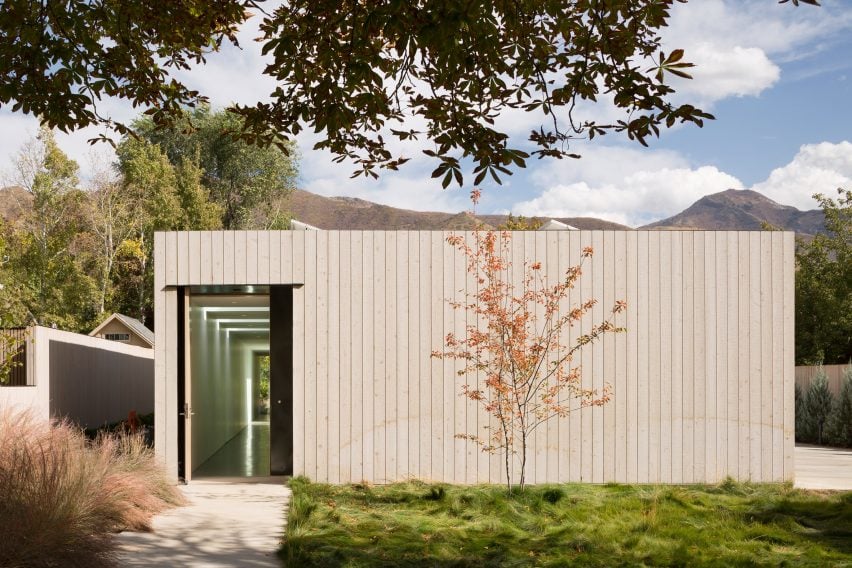
Ground-source heat pumps and low-lying buildings
Low-lying buildings stay cooler than tall skinny ones because the ground maintains a pretty even temperature. Ground-source heat pumps essentially supercharge this process by facilitating depositing heat in the ground in summer and drawing heat from the ground in winter.
Host House in Salt Lake City (pictured), was designed by architects Kipp Edick and Joe Sadoski to be a net-zero building. It is mostly one-storey and uses a ground-source heat pump as one of its measures for controlling temperatures during the extremes of the Utah summers and winters.
Find out more about Host House ›
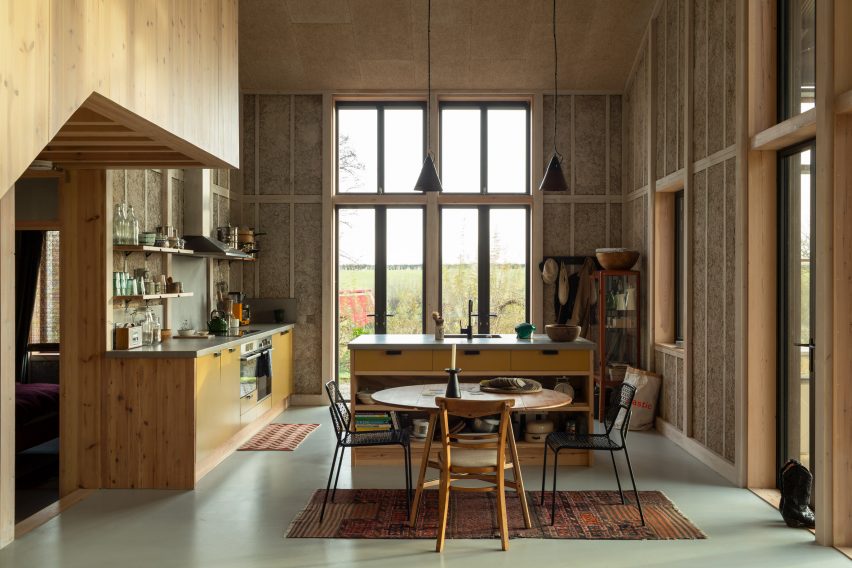
Exposed thermal mass
Internally exposed thermal mass is a mini version of this same concept. Thermally massive materials store heat or coolness, reducing the temperature difference between day and night.
Concrete has been soaring high on the thermal mass scale for far too long. The argument goes that while you’ll emit a load of carbon dioxide making the cement, the energy you’ll save by not having to heat and cool the building as much will make up for it. This is as annoying as those ads for excessively packaged nutrient-free foodstuffs that claim you’ll ‘save’ money buying them because they’re not quite as overpriced as they were yesterday, when you’d be better off not buying them at all. Concrete does not have a monopoly on thermal mass.
Hempcrete – a mix of hemp shiv (the woody stem of the plant) and a lime binder – is a highly insulating material that also provides that much sought-after thermal mass without the huge upfront carbon cost. It’s also vapour permeable and absorbs and releases moisture depending on its environment, so it controls humidity. Other low-carbon thermally massive materials include stone, rammed earth, and unfired bricks.
Flat House in Cambridgeshire (pictured), is a zero-carbon house designed by Practice Architecture that makes extensive use of hempcrete inside and out, especially on the exposed interior walls.
Find out more about Flat House ›
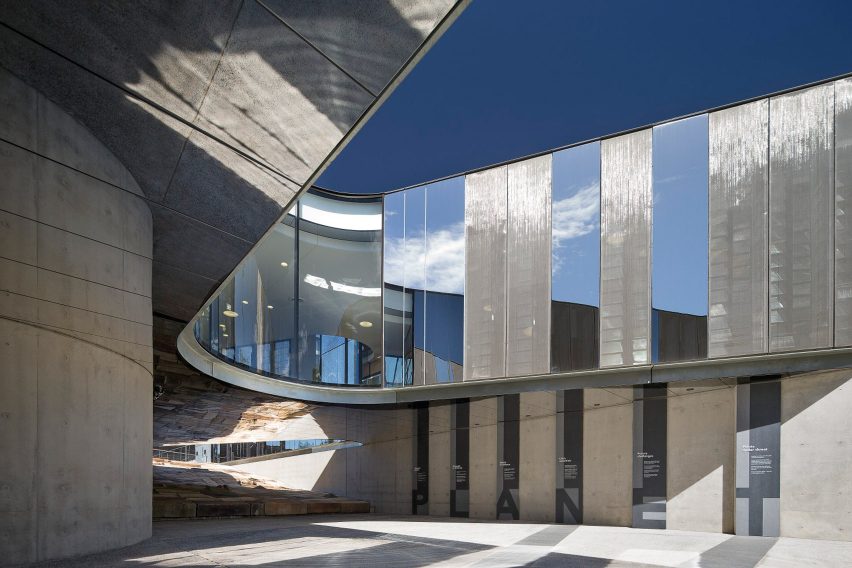
Air cooling
If you create a labyrinth of thermal mass in your basement then not only do you get to say “want to see my labyrinth?” when people come to visit, you also have a no-need-to-plug-in coolness store always at hand. If you slowly pass outside air across the cool walls and of your cool underground maze before bringing it into inhabited spaces, then you’ve supercooled your passive ventilation without any chillers.
The Australian Plant Bank in New South Wales (pictured) uses an underground thermal labyrinth to capture and retain the heat of the day or the cool of the night, preventing sharp temperature fluctuations and warming or cooling the building by up to 7.5 degrees centigrade. It was designed by BVN Donovan Hill.
Find out more about the Australian Plant Bank ›
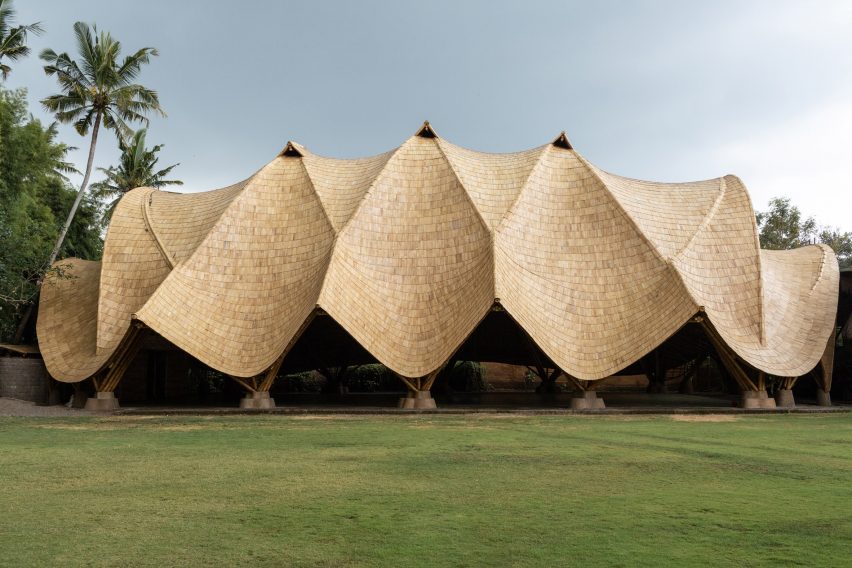
Heat extraction
As well as bringing in the cold we need to get rid of the heat. Even if you unplug everything, people still generate heat that needs removing, especially if there are a lot of people in your building.
Of course, unless your building is in a climate that never gets cold, even at night, this heat extraction needs to be controlled. Heat rises, so tall spaces that allow the heat to collect out of the way, openable windows at a high level that let the hot air out, and chimneys with wind cowls that use the passing wind to draw the air up through the building are all good tactics.
The image shows The Arc gymnasium in Bali designed by Ibuku, which uses vents at the apex of its roof to allow warm air to escape. Find out more about The Arc ›
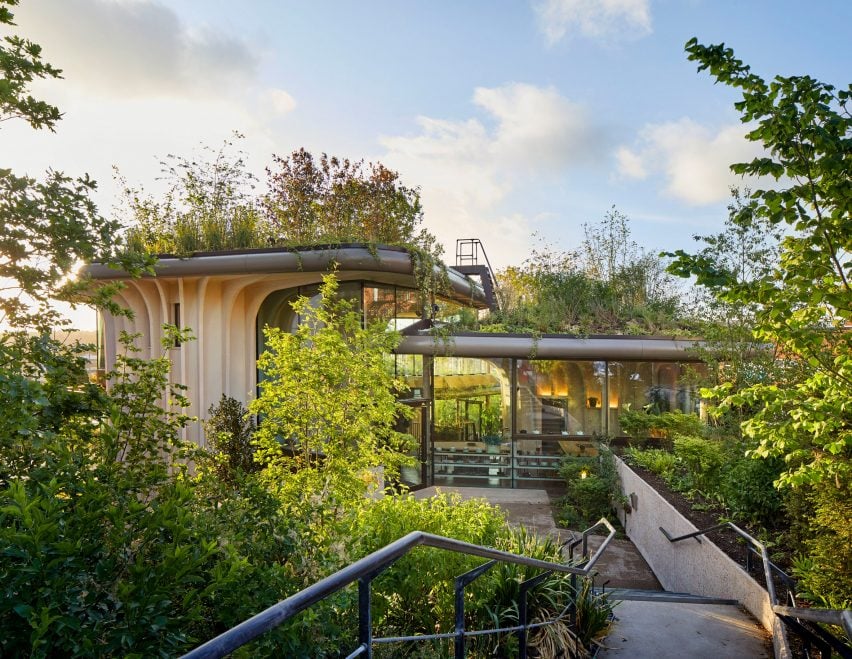
Keeping heat out
To reduce the amount of work the building needs to do to extract the heat or bring in the cold, well-designed buildings keep the heat out. If you don’t have a thermal labyrinth in your basement (yet!) then having a heat exchanger on your air intake/extract means you’re not losing heat in winter or gaining it in summer.
A huge way to prevent the temperature indoors from being a slave to the temperature outdoors is insulation: lovely thick insulation made from biobased, non-polluting materials. Couple this with double or triple glazing and a fat green roof (both insulating and brilliant for biodiversity) and you’re laughing.
The image shows the Maggie’s Centre for cancer patients in Leeds, designed by Heatherwick Studio and built with natural materials. Its roof is covered in plant species native to the woodlands of Yorkshire. Find about more about this Maggie’s Centre ›
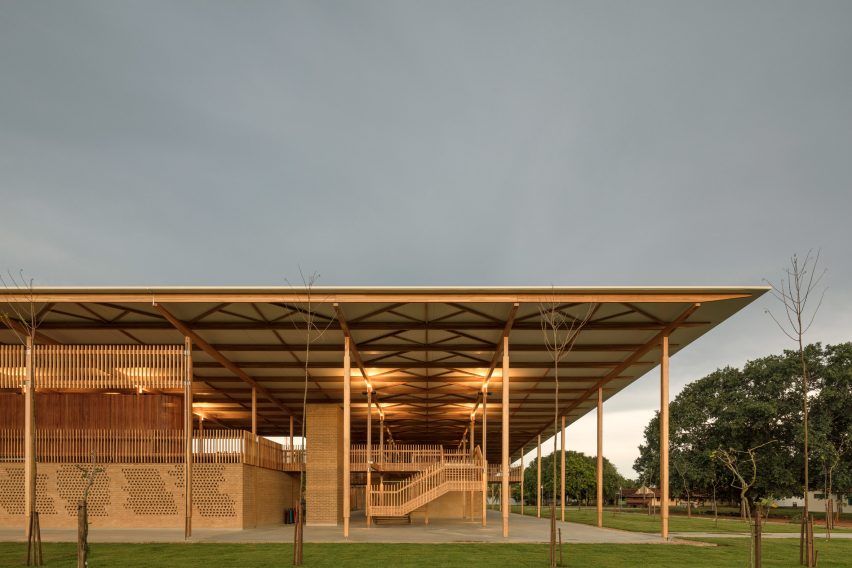
External shading
We’re getting better at insulation, but what we’re still mostly rubbish at as a profession is external shading. This keeps the heat off the building in the first place.
Shading needs to consider orientation. Vertical shading is best for east-and west-facing facades where the sun is lower. Overhangs and horizontal shading are best for the highest sun (from the south in the northern hemisphere and north in the southern hemisphere).
Deciduous trees are also handy, given how they shed their little shading units (aka leaves) in the winter when you appreciate the sun’s warmth. Other dynamic shading options are shutters and awnings that you can move or open and close. The shading is best outside because then the heat never gets indoors, but at a push, internal shading that’s pale – so that it reflects the heat back out – is better than nothing.
Aleph Zero and Rosenbaum designed the Children Village school boarding facility in northern Brazil (pictured) with a large canopy roof framed by cross-laminated timber to shade the building.
Find out more about Children Village ›
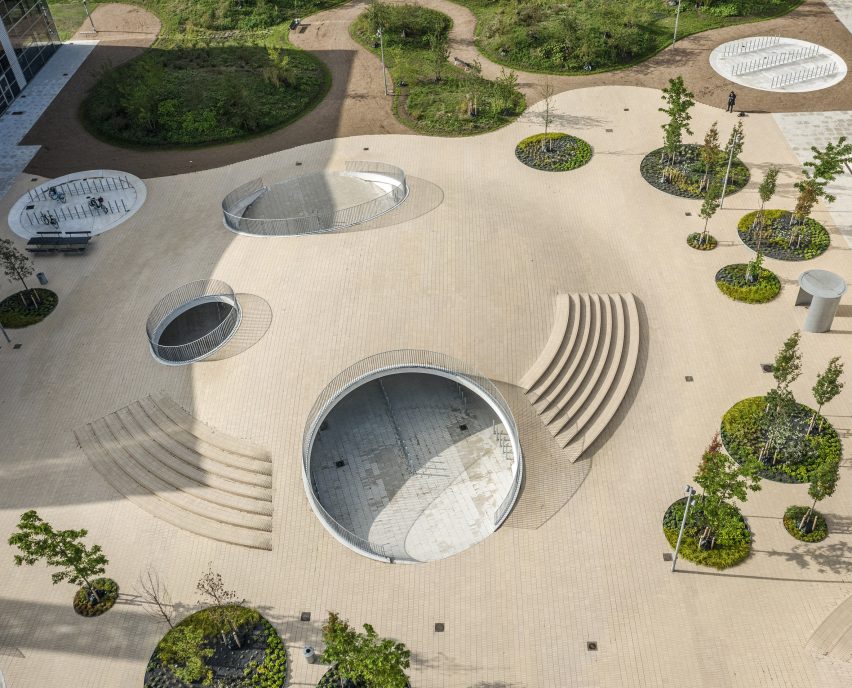
Green urban environments
Designing a cool building is not just about the building, but also about designing a cool environment for your building to be in. The urban heat island effect can increase temperatures in urban areas by more than 10 degrees Celsius compared to their rural neighbours. We desperately need to tackle this if we’re to ease the health impacts of heatwaves and reduce the energy demand of buildings.
This means fewer heat-emitting things in urban spaces, ie fewer cars and fewer air conditioning units pumping out hot exhaust into the streets. It also means not leaving heat batteries lying about in the sun: towns and cities tend to be stock-full of thermal mass in the form of masonry, paving, and tarmac that soak up the heat from the sun and hang on to it tightly. We need less tarmac and more green, and when we retrofit our buildings with external insulation it would be great if this was reducing the amount of masonry cooking in the sunshine.
The Karen Blixens Plads public plaza in Copenhagen (pictured), which was designed by COBE, covers sheltered parking for bicycles and features neutral-coloured tiles frequently interspersed with planting and trees.
Find out more about Karen Blixens Plads ›
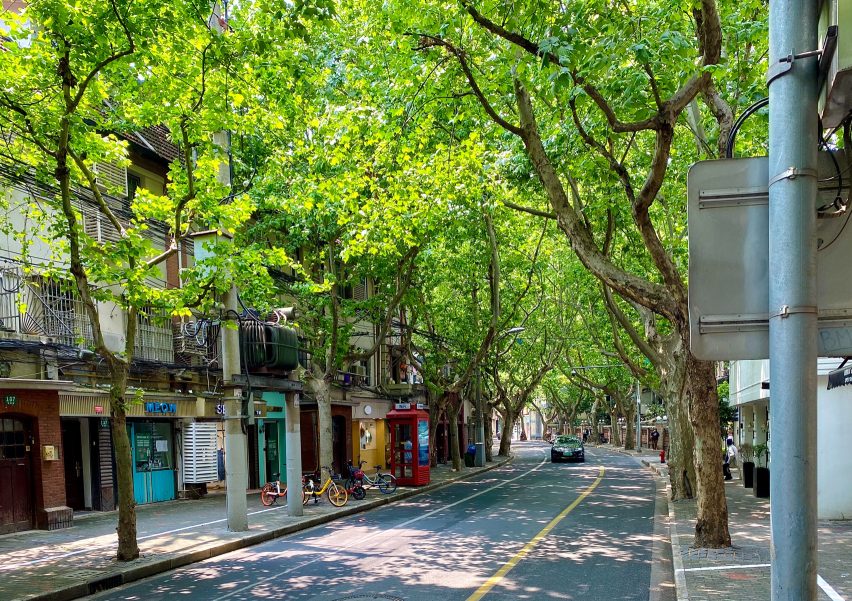
Shaded public realm
Trees are magic. Not only do they provide shade, habitats for a gazillion species, share information and nutrients with each other and other plants through mycelium networks and improve soil health, but they also cool the air around them via evapotranspiration.
This is where the trees use the heat energy in the air to evaporate the water in their leaves. We don’t need to leave this all up to the trees, however: moving water (from waterfalls to misters) has the same effect, as when the water evaporates it leaves the air around it cooler. We can also rip off the trees’ shading technologies: keep the sun off external spaces to prevent those hard, thermally massive materials from cooking us like pizza stones.
The image shows a street in Shanghai.
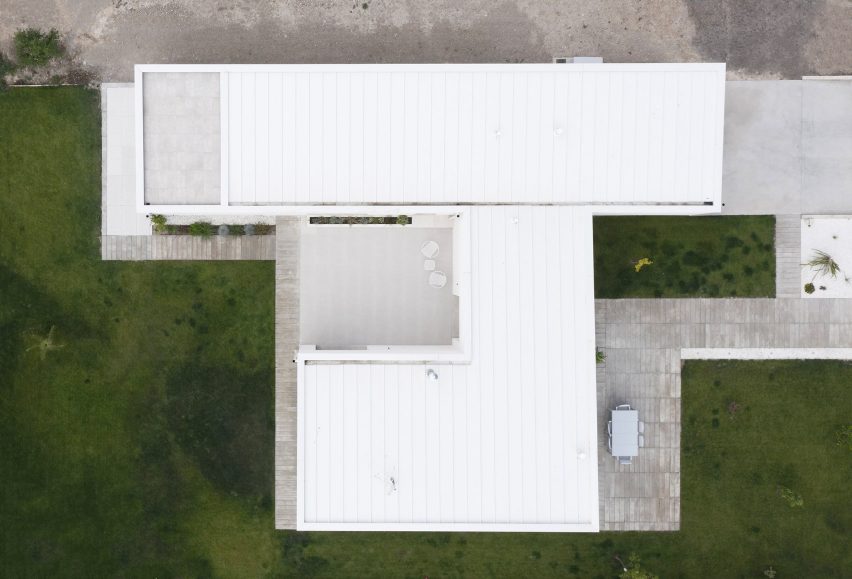
Pale roofs
A final dig at tarmac and its buddy, the bitumen roof, is that they are dark and so they absorb heat. If these surfaces were paler, they could help reflect heat back out of town.
Casa Banlusa (pictured) is a white-roofed villa in Valladolid designed by architecture studio Sara Acebes Anta.
Find out more about Casa Banlusa ›
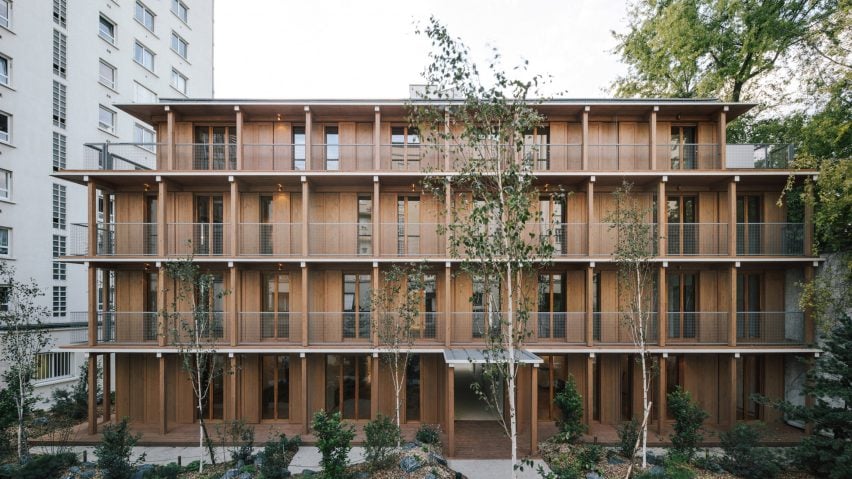
Low-energy living and reduced embodied carbon
As well as ‘fabric first’ and alleviating the urban heat island effect, let’s remember that facilitating behaviours that allow us to adapt to a changing climate is also part of this story. For example, how do the acoustics inside your home allow you to work odd hours, or how can you design spaces not for fixed activities, but the flexibility to allow inhabitants to move around a house as the sun moves across the sky?
Reducing the amount of heat being generated inside a building is a concept that bridges behaviour change and building design. Pretty much everything we plug in is pumping out heat (even a fan, depressingly) so we need more efficient appliances but also to just switch stuff off. If there’s an alternative way to do something without energy, consider it!
Mars Architectes designed the apartment block in Paris (pictured) entirely from wooden modules that are also clad in timber.
This brings us almost to the end of our survey of principles for being a cool designer. There’s just one final thing, arguably the most important.
Definitely do all that stuff above, but if you want to be a really cool designer, you need to not only massively reduce the energy needed to make your projects comfortable and healthy, you also need massively reduce the embodied carbon of your projects. In other words, you need to throw off the duvet that is all those greenhouse gases in the atmosphere.
To our human eyes, carbon dioxide and methane are as transparent as oxygen, but if we could see infrared light, we would see the atmosphere getting more and more opaque. Those greenhouse gases are causing global heating by blocking infrared light from busting out into space, like when your duvet hides the fact that your phone is still glowing when your family thinks you’re asleep. Not cool. Not cool. Not cool.
Find out more about this apartment building ›
Smith Mordak is a multi-award-winning architect, engineer, writer and curator and the director of sustainability and physics at British engineering firm Buro Happold.
Dezeen is on WeChat!
Click here to read the Chinese version of this article on Dezeen’s official WeChat account, where we publish daily architecture and design news and projects in Simplified Chinese.

